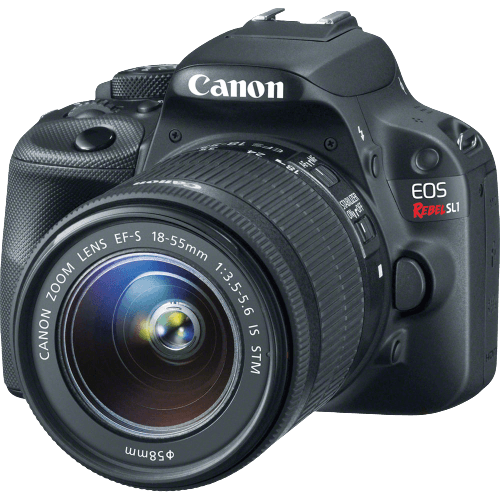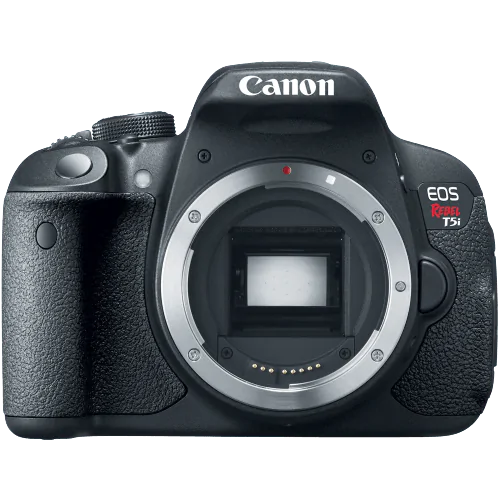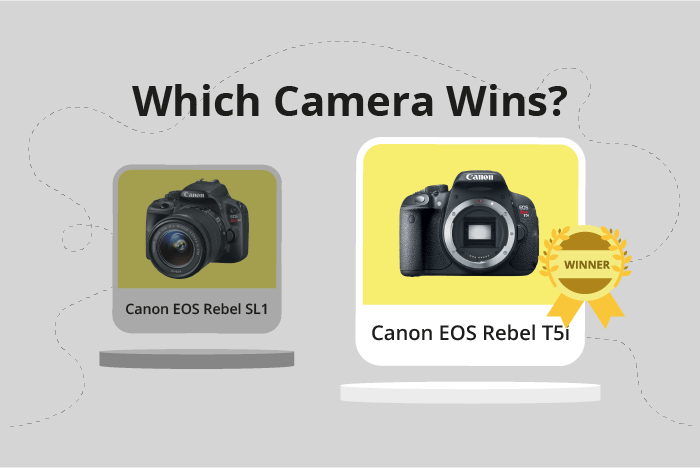Canon EOS Rebel SL1 / 100D vs EOS Rebel T5i / 700D Comparison
Canon EOS Rebel SL1 / 100D

Canon EOS Rebel T5i / 700D

The Canon EOS Rebel T5i / 700D edges out the Canon EOS Rebel SL1 / 100D with a score of 44/100 compared to 43/100. Both cameras are DSLR models announced on March 21, 2013, and released in the same year. They share similar specifications, but there are differences that make one stand out over the other.
The T5i is heavier, weighing 580g, and larger with dimensions of 133 x 100 x 79mm. This extra weight and size may provide a more solid feel for some users. On the other hand, the SL1 is lighter at 407g and more compact with dimensions of 117 x 91 x 69mm, making it ideal for those seeking a more portable option.
While the T5i has a higher launch price of $750 compared to the SL1’s $650, the extra cost may be justifiable for those who prefer its features. Ultimately, the choice between these two cameras depends on individual preferences for size, weight, and price.
Canon EOS Rebel SL1 / 100D vs EOS Rebel T5i / 700D Overview and Optics
The Canon EOS Rebel SL1 / 100D and the Canon EOS Rebel T5i / 700D have identical scores for optics, both receiving 40/100. These cameras share many specifications, such as an 18-megapixel CMOS sensor, Digic 5 processor, APS-C sensor size, Canon EF-S lens mount, and no image stabilization.
The Rebel T5i / 700D outperforms the Rebel SL1 / 100D in shooting speed, capturing five frames per second (fps) compared to the SL1 / 100D’s four fps. This advantage allows the T5i / 700D to capture fast-moving subjects more effectively, making it a better choice for action photography.
On the other hand, the Rebel SL1 / 100D has a slightly higher DXOMARK score for its sensor, with a rating of 63 compared to the T5i / 700D’s 61. This difference implies that the SL1 / 100D may produce marginally better image quality in some situations. However, the difference is minimal and may not be noticeable in everyday photography.
Both cameras lack image stabilization, which could limit their performance in low-light situations or when using longer focal lengths. A lens with built-in stabilization could help mitigate this issue for both models.
Given their identical scores and similar specifications, neither camera has a significant advantage in optics. The Rebel T5i / 700D’s faster shooting speed may appeal to action photographers, while the SL1 / 100D’s marginally better DXOMARK sensor score might be of interest to those seeking the best possible image quality. However, these differences are minor, and both cameras are suitable for general photography purposes.
Canon EOS Rebel SL1 / 100D vs EOS Rebel T5i / 700D Video Performance
The Canon EOS Rebel SL1 / 100D and Canon EOS Rebel T5i / 700D have identical video scores of 43/100. Both cameras share common specifications, such as Full HD video resolution, maximum video dimensions of 1920 x 1080, and a maximum video frame rate of 30fps. Neither camera has built-in time-lapse functionality.
There is no clear winner in terms of video capabilities, as both cameras have the same features and performance. The Canon EOS Rebel SL1 / 100D and Canon EOS Rebel T5i / 700D provide users with high-definition video recording, allowing for crisp and clear footage. The 30fps frame rate ensures smooth video playback, suitable for various filming scenarios.
Neither camera outperforms the other in video capabilities, as their specifications are identical. Users of both the Canon EOS Rebel SL1 / 100D and Canon EOS Rebel T5i / 700D will have access to the same video features and performance levels. No advantages are found in one camera over the other in this aspect.
Considering the video capabilities of the Canon EOS Rebel SL1 / 100D and Canon EOS Rebel T5i / 700D, potential buyers can confidently choose either camera without compromising on video performance. Both cameras deliver high-quality video recording, making them suitable choices for those looking to capture important moments or create content. The identical video scores reflect the equal capabilities of these two cameras.
Canon EOS Rebel SL1 / 100D vs EOS Rebel T5i / 700D Features and Benefits
The Canon EOS Rebel SL1 / 100D and the Canon EOS Rebel T5i / 700D both have a feature score of 57/100, which means they offer similar capabilities. They share several common features, such as a 3-inch screen with a resolution of 1,040,000 dots and a touchscreen interface. Neither camera has GPS, WiFi, or Bluetooth capabilities.
The Canon EOS Rebel T5i / 700D has a slight advantage over the Canon EOS Rebel SL1 / 100D with its flip screen feature. The flip screen allows for easier and more flexible framing of shots, especially when capturing images or videos from difficult angles or when using a tripod. This feature makes the T5i / 700D more versatile for various shooting scenarios.
On the other hand, the Canon EOS Rebel SL1 / 100D does not offer any significant advantages over the T5i / 700D in terms of features. Both cameras have the same feature score, screen size, resolution, and connectivity options.
Based on these comparisons, the Canon EOS Rebel T5i / 700D is the better choice for photographers who value flexibility in framing their shots, thanks to its flip screen feature. The Canon EOS Rebel SL1 / 100D offers no distinct advantages over the T5i / 700D, making it a less preferable option. However, both cameras provide a decent set of features for entry-level photographers, with the same feature score and core specifications.
Canon EOS Rebel SL1 / 100D vs EOS Rebel T5i / 700D Storage and Battery
The Canon EOS Rebel T5i / 700D outperforms the Canon EOS Rebel SL1 / 100D in storage and battery with a score of 24/100, compared to the SL1 / 100D’s 21/100. Both cameras share the same storage specifications, having one memory card slot and accepting SD, SDHC, and SDXC memory cards. However, the T5i / 700D has a longer battery life, capable of taking 440 shots on a single charge, while the SL1 / 100D can only take 380 shots. The T5i / 700D uses an LP-E8 battery, while the SL1 / 100D uses an LP-E12 battery. Neither camera has USB charging.
The T5i / 700D’s longer battery life makes it a better choice for extended photography sessions, allowing users to capture more images without needing to replace the battery. The SL1 / 100D does not have any advantages over the T5i / 700D in terms of storage and battery.
Considering the storage and battery aspects, the Canon EOS Rebel T5i / 700D is the superior choice due to its longer battery life, which enables users to take more shots before needing to recharge or swap batteries.
Alternatives to the Canon EOS Rebel SL1 / 100D and EOS Rebel T5i / 700D
Are you still undecided about which camera is right for you? Have a look at these popular comparisons that feature the Canon EOS Rebel SL1 / 100D or the Canon EOS Rebel T5i / 700D:

